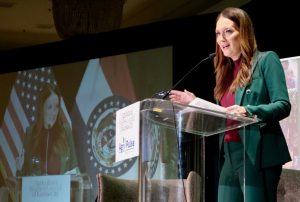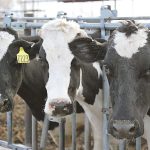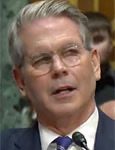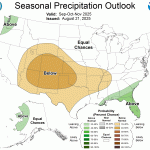Original wealth

Last week I learned that I’m a pseudonymuncle. What’s that, you say? Well, a pseudonymuncle is defined as “an insignificant person writing under a pseudonym — which means a “fake” name. That fits me to a T because I’m about as insignificant as a person can be and I’ve been writing this column under the “Milo Yield” pseudonym for more than 51 years.
So, in this column I’m taking the liberty as a pseudonymuncle to go off the deep end and discuss “original wealth” — as compared to just plain ol’ “monetary” wealth or “add-on” wealth — and why agriculture plays an indispensable role in the discussion. So, if I’ve got the leeway to lead this impromptu discussion, insignificantly, then you’ve got the freedom to believe all, none, or just parts of it.
Let’s begin with my definition of “original wealth.” It’s something with intrinsic value that is created, but hasn’t yet entered the realm of economics because it hasn’t been priced. By its very definition, “original wealth” has an origin. That origin is firmly rooted in our Mother Earth.
Humans had no role in the creation of the most basic free forms of original wealth. They didn’t create the air we breathe. They didn’t create the water we drink. They didn’t create the living, fertile soil. They didn’t create the untold trillions of microbes in the soil, in digestive systems, or the plankton in oceans that work for free for themselves and for mankind every moment in time.
Yet, mankind does bring forth “original wealth” from the good Earth, predominantly through farming, ranching, mining, drilling, logging and fishing. Everything in the economy — from sewing needles to space needles, from toothpicks to nuclear reactors, from a rasher of bacon to every single computer chip, from the myriad of plastics, to fuels, to a can of green beans — is original wealth that originates from our good Earth. Everything that happens to original wealth, after it is priced, as it moves through the economy becomes some level of “add-on” or “monetary” wealth.
Benjamin Franklin, one of our nation’s most astute founding fathers understood the role of agriculture in original wealth creation. Here’s his famous quote on the subject: “There seem to be but three ways for a nation to acquire wealth. The first is by war. This is robbery. The second by commerce, which is generally cheating. The third by agriculture, the only honest way, wherein man receives a real increase of the seed thrown into the ground, in a kind of continual miracle …”
Extrapolating Franklin’s quote to real life, I can think of no clearer example than a simple ear of corn. A Google search reports that the number of kernels on an ear of corn ranges from 400-800 — so the average is 600. Original wealth is created when a farmer plants a single kernel of corn and five months later at harvest that single kernel yields 600 kernels. Eureka! A 600-fold increase — and every kernel represents original wealth. But, it’s monetary value hasn’t been determined yet. That value is determined by the price that mankind places on it. That is mankind’s biggest failure.
Now’s the time to introduce two other important terms when it comes to a discussion about original wealth. Both, sadly, have fallen out of favor in current day economics and in education. First is the “trade turn.” It is the number of times that a unit of priced original wealth moves through the economy — or trades hands — until it’s influence runs out. The trade turn for agricultural commodities has long been considered as five or higher. (Note: 70% of annual original wealth used is food and fiber.)
The “distribution cycle” no longer is discussed in classrooms nor printed in texts or references. But it still exists and it clearly illustrates how the “trade turn” works — influenced by both production units and price per unit. The “distribution cycle” is pictured. It is the economic mechanism that provides all the “add-on” wealth or “monetary” wealth to our capitalist economy.
The U.S. is in the midst of a bumper food and fiber harvest of original wealth this fall. Sadly, it’s also on the cusp of a re-run of the farm crisis of the 1980s, complete with bankruptcies, auctions and bank crises.
A bountiful harvest should be a boon. Yet, the media is filled with predictions of gloom and doom about the “burden on prices” of a bountiful harvest. My question: How can you have too much “food original wealth” in a hungry and debt-ridden world? You can’t.
So, now this discussion comes down to policy. In my opinion, the U.S. errs in even having “farm policy,” because farm policy is more correctly monetary policy. National policy should concentrate on “original wealth policy.” In short, U.S. economic policy should laser focus in how best to “monetize” it’s bounty of annually produced “original wealth” brought forth from farming, mining, drilling, logging and fishing.
Watch that original wealth corn move through the distribution cycle and the trade turn. Its final “monetary” or “add-on” wealth creation is dependent on both total production and price per unit. As both go up, astounding sums of tens of billions of dollars of “add-on” or “monetary” wealth is created. All that wealth can be more equitably distributed in the economy, but at present it isn’t.
So, why doesn’t the U.S. have a mechanism to properly price “edible and fiber” commodities so that disposable income from every productive acre of Mother Earth is maximized? I see both political parties equally guilty of prioritizing “corporate” capitalism over “people’s” capitalism. The first is a drive to find “cheapest of everything” and ends up accumulating monetary wealth to a relatively few. The second more equitably rewards the actual producers of “original wealth” and distributes the “monetary” wealth from top to bottom of society.
The secret to monetizing “original wealth” is no secret. It’s an intentionally buried historical fact — buried by powerful financial and educational interests. The solution? Simply return to the successful economic policy enacted in the U.S. during the 1940s in the aftermath of WWII. It was called the Steagall Amendment. It worked through a mechanism of a non-recourse loan.
After harvest, an “original wealth” creator (farmer or rancher) was advanced (paid for his production at a rate at par with the rest of the economy) a sum of money by the government — in the form of a non-recourse loan. That advance effectively optimized the disposable income (profit) per acre. That simple action monetized the “original wealth.” The farmer then repaid the loan when he sold his “original wealth” back into the economy. The program had minimal cost to the government. As an additional benefit, any real surplus served as a national food reserve to use when annual production lagged — or as a source for charitable global food aid.
The Steagall Amendment, in effect, served as a “cost of living adjustment” for producers of original wealth. It worked to perfection for everyone but powerful financial interests and free global trade advocates. It proved the existence of a “natural law of economics.”
After the amendment got the post-war economy back on its feet and thriving, those special interests — who don’t prosper when Average Joe is living with earned income and doesn’t need to acquire debt — exercised their political influence and the Steagall Amendment went the way of the woolly mammoth and the free traders got their way.
The U.S. economy has been headed for a crash down the debt highway in all the ensuing decades. The nation and Average Joe has been squeezed and has replaced earned income with debt. The evidence is as plain as the $37-trillion of national debt and a record level of credit card and personal debt in the U.S.
In concluding this “original wealth” discussion, it’s interesting that the natural laws of physics, or math are universally accepted, but no one believes there could be a natural law of economics. Why? History shows that properly monetizing original wealth and letting it move through the distribution cycle and the trade turn is both natural and sustainable and creates across-the-board prosperity.
I’ll close with this thought: “The relentless drive for cheapness leads to debt, which leads to poverty, which spreads malnutrition, inability to think, faulty economics and social policy failure. Pursuing a ‘free lunch’ will ruin civilization. Guaranteed!”
By now I may have proved that I’m not only a pseudonymuncle, but possibly a monkey’s uncle, too. Have a good ‘un.





